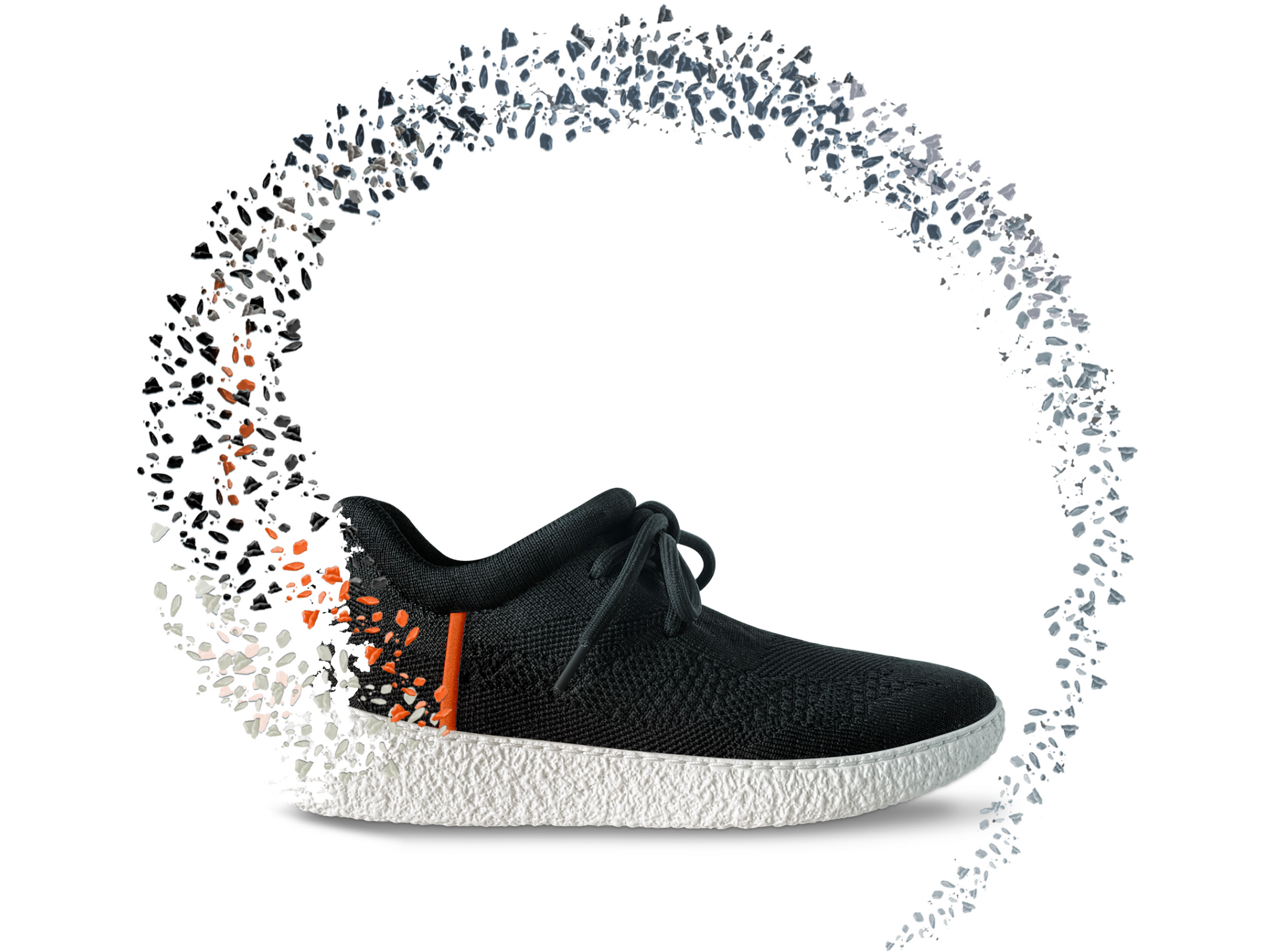
In the late 90s and early 2000s, a new trend swept the fashion and footwear industries: fast fashion. Before fast fashion, new clothing was usually made, marketed, and sold with an annual cycle in mind. With the coming of the late 90s, new developments in mass production encouraged consumers to buy more on a sped up schedule, and fast fashion was born. Now, new products were released seasonally, drastically diminishing the fashionable life cycle of an article of apparel. The new pair of shoes you bought in June were “out” by September.
The result? The year 2000 alone saw 50 billion new pieces of apparel manufactured for the global market. And while the world’s population has increased by only 27 percent since that time, the amount of new apparel pieces has increased by over 50 percent. What’s the effect on the environment? As discarded, non-recyclable materials amass, carbon emissions have skyrocketed. The fashion and footwear industries have outpaced even maritime shipping and international flights when it comes to carbon emissions per year.
The Hidden Cost of Fashion
Since fast fashion has made apparel increasingly replaceable, apparel has also become increasingly disposable on a global scale. Clothing and footwear don’t just disappear. When something ends up in the trash, it loses any future productive value and most likely sits stagnant in a landfill. Even when they are donated for someone else’s use, this just pushes the eventual discarding of them down the road.
So what's the solution? Certainly, everything we do as individuals can make an impact. But for step-change improvements, we need to think bigger. Leading members of the fashion and footwear industries believe that the true solution is transforming the model set by fast fashion. It begins with consumers and producers becoming more conscious of commodities and their lifespans. Welcome to the concept of circularity.
Awareness and action are the driving forces behind circularity, which has begun to direct the trajectory of the apparel industry. The circularity model means that the entire lifespan of a commodity must be accounted for with the maintenance of our planet in mind, meaning all products should be designed for eventual reuse and to minimize waste.
First, raw sustainable materials are obtained, processed, and manufactured. Then, the commodity is transported, retailed, and delivered before it finally begins providing use to the consumer. Once it is worn out, a truly sustainable commodity can’t just be discarded. It should be, in a way, reincarnated—transformed into something new and useful. So, the circle continues to turn, preventing as much waste as possible from escaping the loop and clogging our environment. This new model, developed as a bioethical solution to fast fashion, is beginning to take hold.
Conscious consumers understand the difference between performative environmentalism – like greenwashing– and thoughtful, actionable sustainability. We all deserve a reality where the cost of doing what’s right is reflected on the climate change receipts.
It may seem paradoxical: how can the same industries that engineer and produce products with relatively short lifespans simultaneously be at the forefront of sustainability discourse? This seeming contradiction is what innovative new companies are looking to solve as trailblazers in circularity.
Footwear is constantly in contact with the surface of the earth, giving shoes a materiality—or mortality—fundamental to their character. No matter how well made or well cared for, no shoes will last forever. But with the help of sophisticated technology to understand where shoes fall in their circular lifespans, along with a commitment to bio-based, recyclable solutions, we can begin moving towards more intentional production and consumption.
Smart Shoe Engineering
Typically, footwear manufacturers use dozens of components like foam, cushioning, stitching, glue, printing, and lacing from non-sustainable sources to produce shoes. A circular methodology involves engineering shoes using minimal, reusable components with an eye on facilitating the recycling process. These minimal elements should be bio-based and multifunctional. The entire upper portion of the shoe can be knitted and stitched with the same material, and the sole can be constructed from renewable, natural material rather than the disposable foam.
To take it a step further, shoes should be shipped both ways using completely recyclable packaging. Consumers should have the option of sending their worn-out shoes to be recycled and reused for production, and in turn receive a fresh pair at no additional cost.
An Eco-Subscription Model
Sustainability isn’t as simple as recycling shoes. True circularity cannot be achieved without knowing how a shoe is actually being used. Think about it. Wouldn’t it make more sense to know exactly when an old pair of shoes is worn out and needs to be recycled?
Leveraging wearable technology can help bring circularity to life by educating a consumer on where their shoe is in its lifespan. How many steps have you taken in your shoes? Have the materials begun to wear out due to prolonged use? This way, a responsible consumer better understands when it’s time to send in their old shoes for recycling, without wasting a still-useful pair. Data can and should be used as a bioethical instrument that fine-tunes efficient decision-making for consumers and producers.
Smart technology combined with sustainable practices provides the footwear industry with a unique opportunity to use data for a purpose that is actually in the best interest of people and the planet. With the right tech, will, and know-how, the information our feet—and shoes—hold is simple to uncover and interpret. As the world moves towards a more environmentally conscious global community, developments like these will be essential in spearheading circularity in the fashion industry and beyond.



